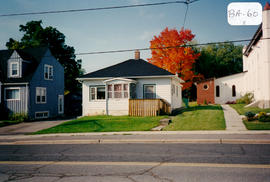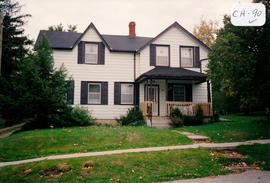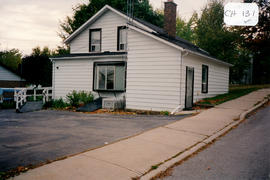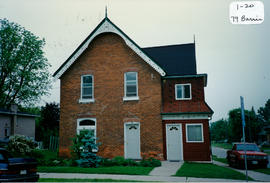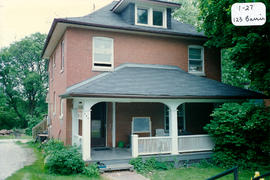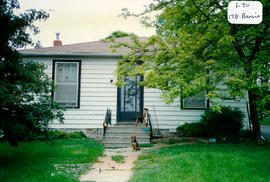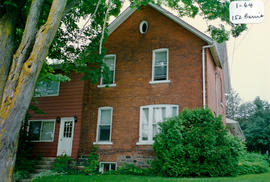- CA BWGPL GJ-HB-2017-03-08-05
- Pièce
- 1995
Fait partie de George Jackson fonds
The mid-block building located on the west side at 60 Barrie St. was built pre-1900 in the Ontario Vernacular Cottage style. The one-storey, three-bay cottage has a symmetrical façade, a square plan, and a centre hall. A box hall was typical for this style. It has a shallow-pitched, hip roof and small window openings with low floor to ceiling heights. The double-hung windows at the ground floor have plain, wood trim and sills. Some 2/2 windows appear to be original. The enclosed porch was added at a later date. It has a single door opening to one side. The house has wood frame construction with vinyl siding (probably wood originally) and a parged, stone foundation. There is a single, brick, masonry chimney at the centre of the house. According to the 2000 inventory, few existing building elements appear to be original (other than the form). It also notes that the cottage probably had few decorative details originally. (1, 3)
Sans titre

